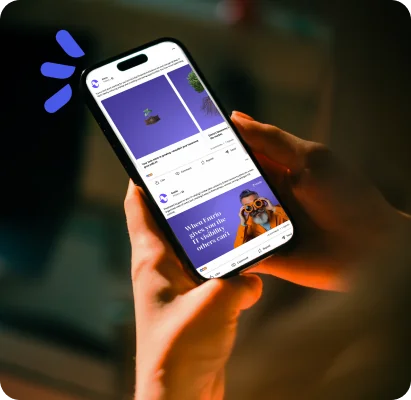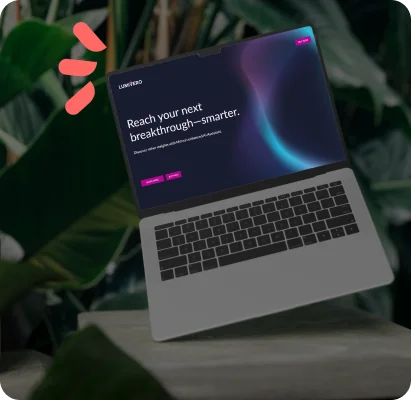LinkedIn Ads continue to be one of the most effective ways to connect with professional audiences, build brand authority, and drive real results. Setting up your first ad? That’s the easy part. Mastering LinkedIn Ads that work—and work efficiently—takes strategy, patience, and a little marketing swagger.
Luckily, LinkedIn’s made major moves in the past few years: smarter targeting, better analytics, and tools that actually make life easier for marketers who know how to use them.
Whether you’re promoting a product, service, or personal brand, these six best practices will help you turn those ad dollars into serious ROI.
1. Lay the groundwork before you launch
Before you even think about creating an ad, you need a strong foundation on LinkedIn. Start by creating a free LinkedIn Company Page (non-negotiable) and setting up your LinkedIn Campaign Manager account. This is your command center: it’s where you’ll set your audience, budget, creatives and track every move your ads make.
If you’re serious about scaling, start exploring tools like conversion tracking, CRM integrations and LinkedIn’s AI-powered optimization tips early. LinkedIn continues to roll out tools to help advertisers improve performance, including advanced conversion tracking, AI-powered optimization tips and better integration with CRM platforms. Building the right setup from the start will save you countless headaches (and dollars) down the line.
2. Create captivating, click-worthy content
Success on LinkedIn starts with content that speaks to your audience professionally, persuasively, and in a tone that reflects your brand.
Pick the right format for your goals
Before launching your first campaign, take time to explore the LinkedIn ad formats available to determine which is best for your objectives:
- Sponsored Content: Appears natively in the LinkedIn feed
- Sponsored Messaging (InMail): Sent directly to users’ inboxes
- Text Ads: Pay-per-click ads shown on the sidebar
- Dynamic Ads: Personalized ads for each viewer
- Video & Carousel Ads: Perfect for more visual storytelling
The format you choose should match your immediate objective—whether it’s brand awareness, engagement, or lead generation. Over time, you’ll likely want to run multiple campaign types to guide prospects through the funnel.
Focus on delivering value
No matter which format you pick, the goal stays the same: deliver value at every interaction. Your audience is on LinkedIn to build their network, stay informed and grow professionally—so meet them there. Write clear, compelling copy that appeals to their goals and encourages them to take action.
Best practices for ad creative
For every ad, follow these proven tips:
- Include a high-quality, relevant image, carousel or video
- Use a strong, benefit-led headline
- Keep your copy clear, concise and action-oriented
- Match your ad to a landing page that delivers on the promise
- Refresh your ads at least once a month to avoid ad fatigue
Even small updates to your visuals or messaging can make a big difference. Testing and evolving your content is key to sustaining strong performance.
3. Target smarter, not harder
Success on LinkedIn isn’t just about reaching more people—it’s about reaching the right people. LinkedIn’s professional targeting options are one of its greatest strengths, but to get the most out of them, you need a smart approach.
Go beyond basic demographics
Think bigger than age and location. LinkedIn lets you filter by:
- Job title or function
- Industry or company size
- Job seniority level
- Company name or category
- Degrees and education
- Skills
- Years of experience
Using these filters, you can get in front of the people who actually matter to your business—the ones with the authority, expertise, and need for what you’re offering.
Use location (but don’t over-target)
Location targeting isn’t optional—LinkedIn requires it. But from there, filter thoughtfully. Adding one or two more targeting layers is usually enough to hone in without boxing yourself into a corner.
Pro tip: While it might be tempting to hyper-target, resist the urge to overdo it. If your audience shrinks too small, your ads won’t have enough data to perform well. LinkedIn recommends keeping your audience size between 50,000 and 300,000, depending on your campaign goals.
Expand your reach with advanced tactics
When you’re ready to level up, don’t just target—retarget and nurture:
- Reengage website visitors with Website Retargeting
- Nurture prospects with Contact Targeting
- Run account-based marketing (ABM) campaigns with Company Targeting
No matter which advanced tactic you use, remember: testing and optimization are the names of the game. Pay attention to who’s clicking, engaging, and converting—then refine your audience strategy to stay sharp.
4. Test, learn and test again
Getting your first campaign live feels great, but the real magic happens when you commit to testing. Smart marketers know that “set it and forget it” is a one-way ticket to mediocre results.
Build multiple ad variations
Every new campaign should launch with 4–6 ad variations. Change up:
- Headlines
- Body copy
- Images vs. videos
- Calls-to-action (CTAs)
- Single image vs. carousel formats
Small tweaks lead to big insights. You’ll quickly see what resonates with your audience and where you can double down.
Check in (and pivot) often
LinkedIn’s algorithm favors top-performing ads over time, but it’s still your job to manually check campaign performance, weekly at a minimum. If something isn’t performing, don’t just pull it. Try adjusting the image, headline or CTA first.
Testing is a mindset, not a milestone. The more curious you are, the faster your campaigns will improve.
5. Set a smart, competitive budget
When it comes to LinkedIn Ads, your budget isn’t just a number; it’s a strategy.
Start with clear goals
First things first: know what you’re aiming for. Are you building brand awareness, driving website traffic, or collecting qualified leads? Your objective will shape everything from your bidding strategy to your creative approach.
Set a testing budget that makes sense
LinkedIn suggests $100/day for optimal performance, but most brands can start around $200–300/week and scale up based on results. A healthy test budget gives you enough data to learn and improve without burning through your resources too fast.
Choose the right bidding model
Pick a model that matches your goal:
- Cost-per-click (CPC): Ideal for driving traffic and leads
- Cost-per-impression (CPM): Best for awareness campaigns
- Cost-per-send: Specific to messaging ads like InMail
Pro tip: LinkedIn uses a second-price auction model, meaning you rarely have to pay your full bid amount. But if your bid is too low, your ad may not get shown at all.
Monitor and adjust
Budgeting isn’t a “set it and forget it” move either. Watch your early performance closely. Be ready to adjust your bids, budgets, or campaign strategy based on what’s working (and what’s not). Smart spenders get better results—and better ROI.
6. Analyze, optimize and scale
Getting your ads live is just the start. The real wins come from analyzing your results, learning what works, and scaling smartly.
Focus on the right KPIs
Tie your metrics to your goal:
- Brand awareness: Impressions, reach, engagement rate, video views
- Website traffic: CTR, clicks, CPC, CPM
- Lead generation: Conversion rates, cost per lead (CPL), lead quality
Measuring the right things ensures you’re not just guessing—you’re making data-backed decisions.
Optimize continuously
Optimization isn’t about making huge overhauls overnight. It’s the small, consistent changes—refining your audience, creative, bidding, and landing pages—that add up to major performance gains.
Dive into LinkedIn Audience Insights to spot trends. If a particular title, industry or company is engaging more than others, lean into it. Give your best-performing audiences and assets even more fuel.
Scale strategically
When you start seeing consistent wins, resist the urge to immediately double your budget. Instead, scale in controlled increments, and keep monitoring to make sure your cost metrics stay strong.
Final thoughts: Smart LinkedIn advertisers are built, not born
Mastering LinkedIn Ads is a process, not a one-and-done play. It takes a mix of smart strategy, relentless testing, sharp optimization, and a willingness to evolve as you learn. Stay curious. Stay data-driven. And remember—in digital advertising, the marketers who grow the fastest are the ones who never stop improving.
Want to turn “good enough” marketing into “can’t-miss” campaigns? Let’s make it happen.



